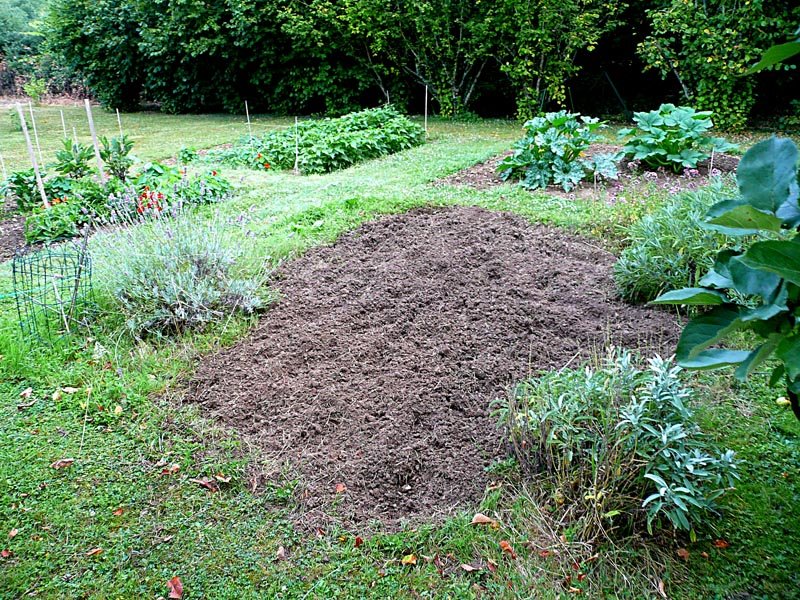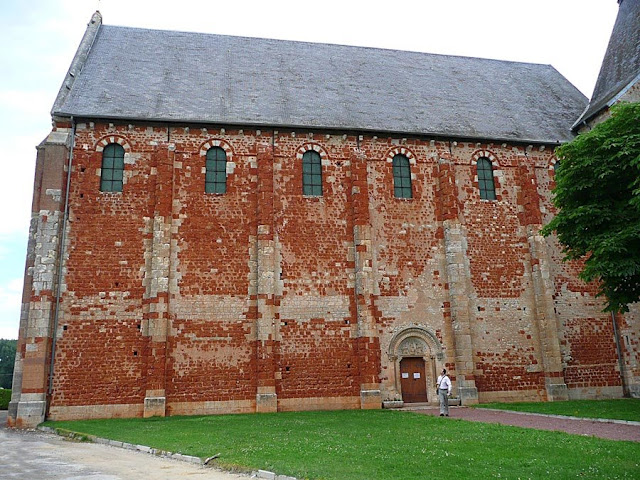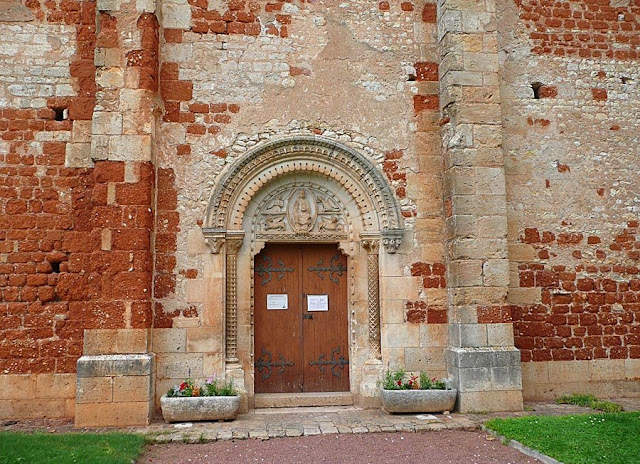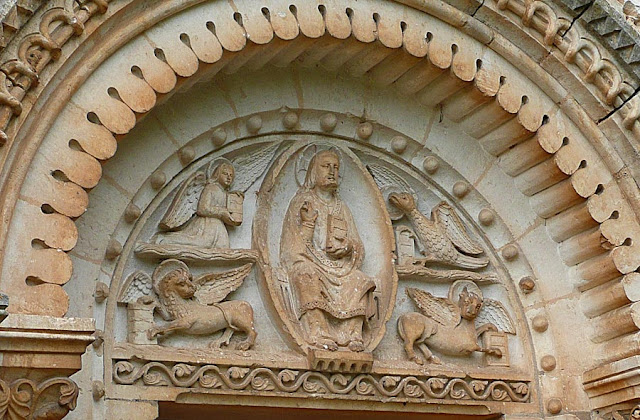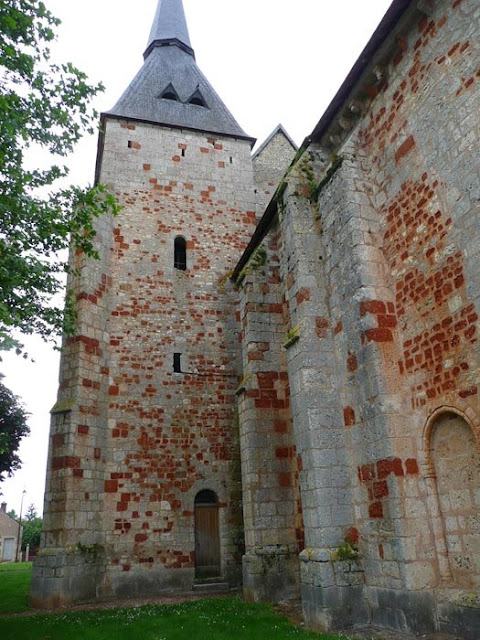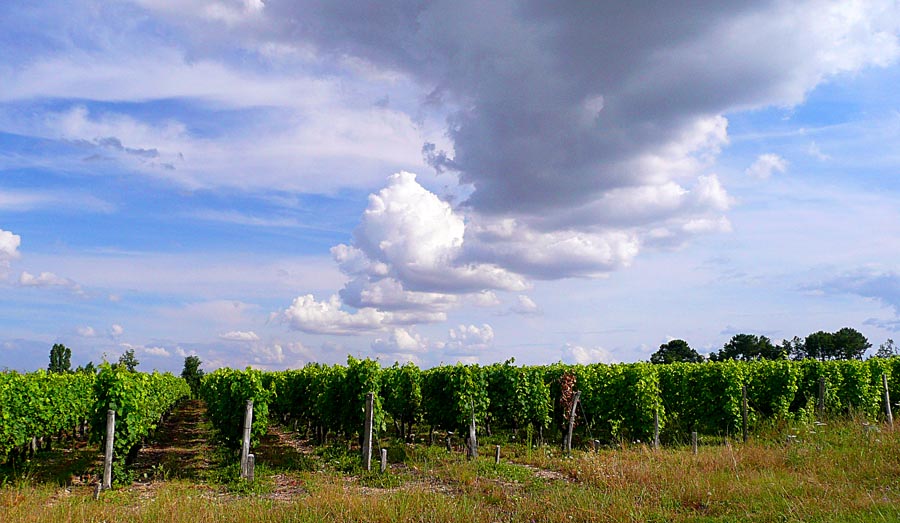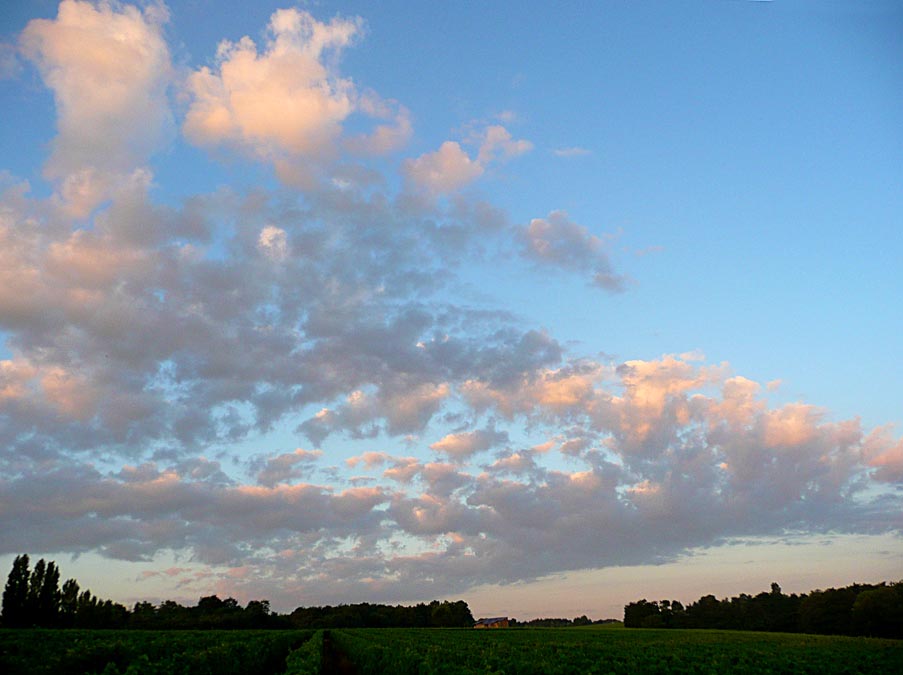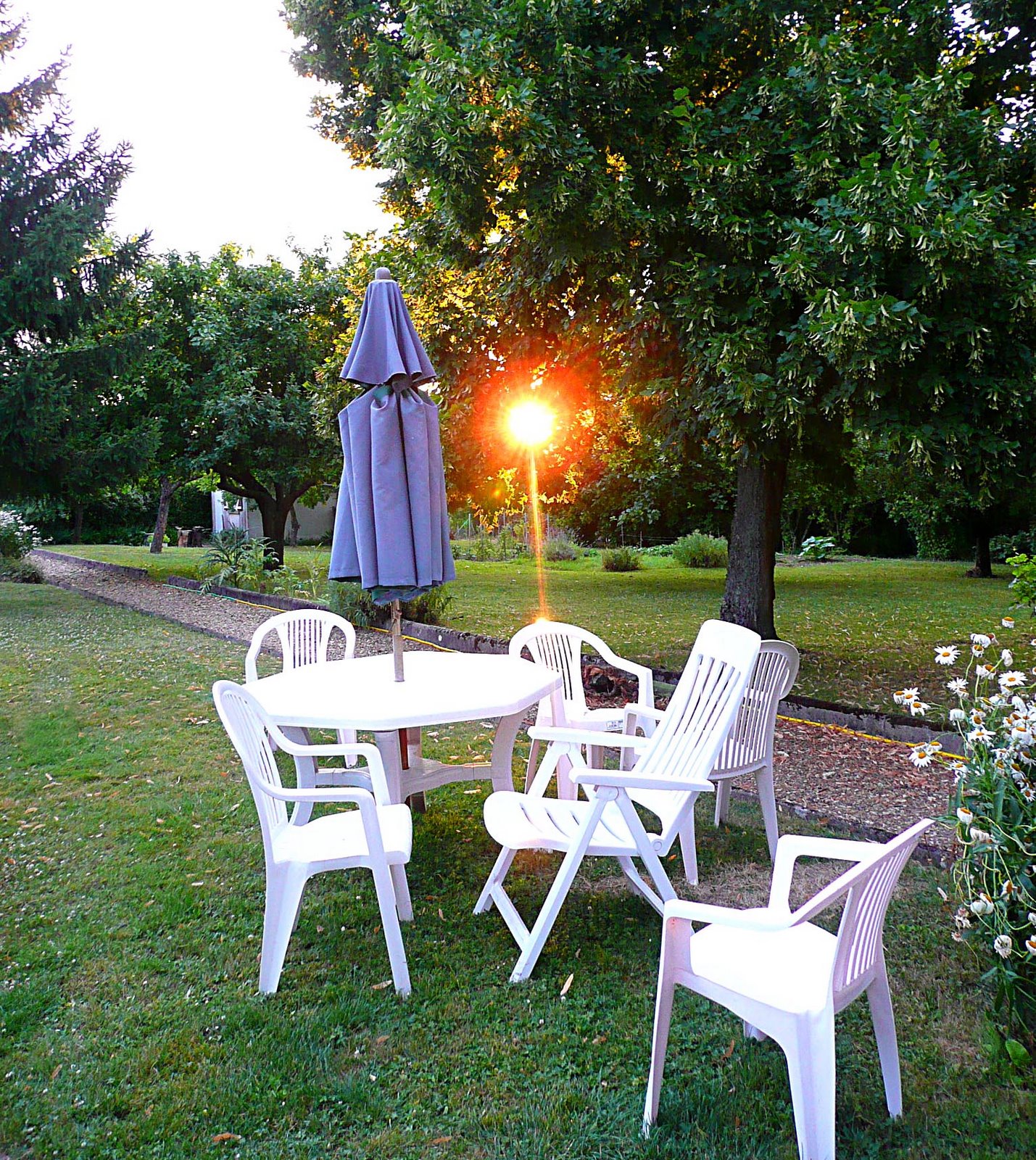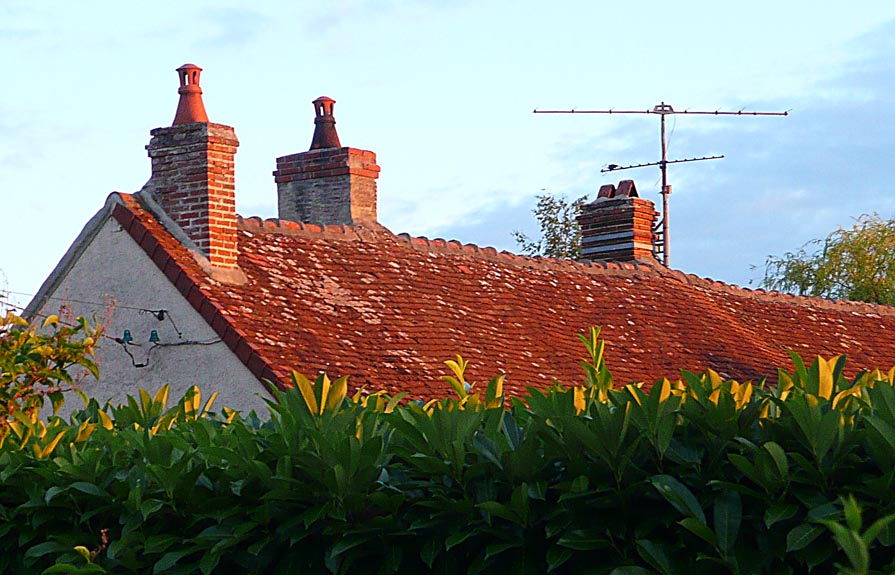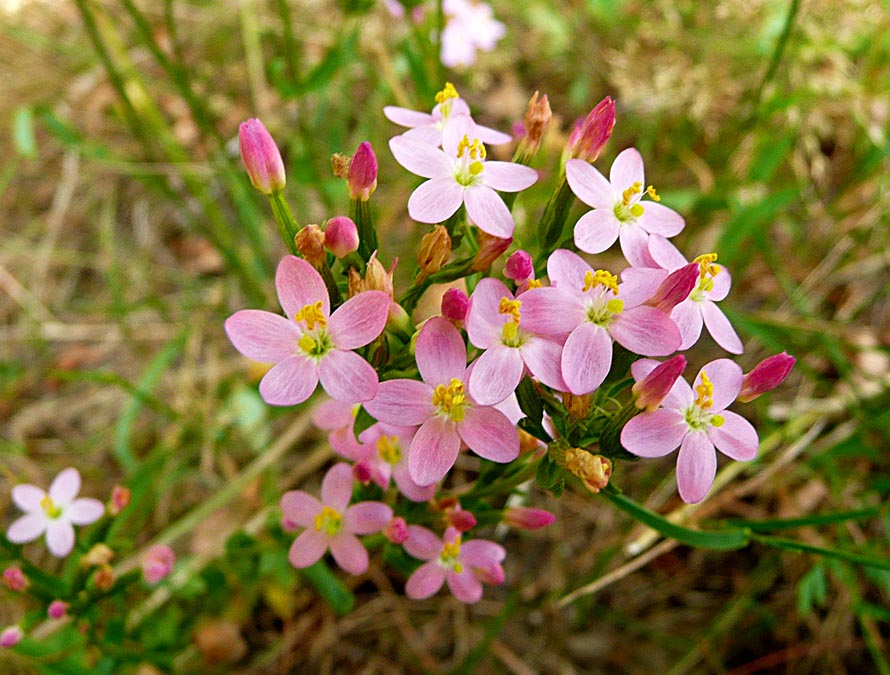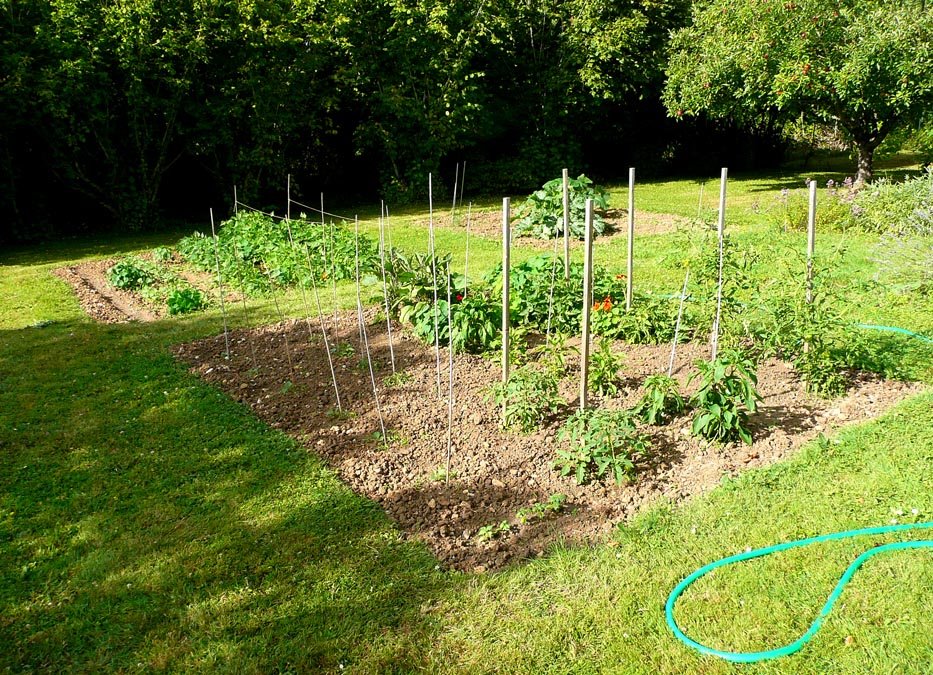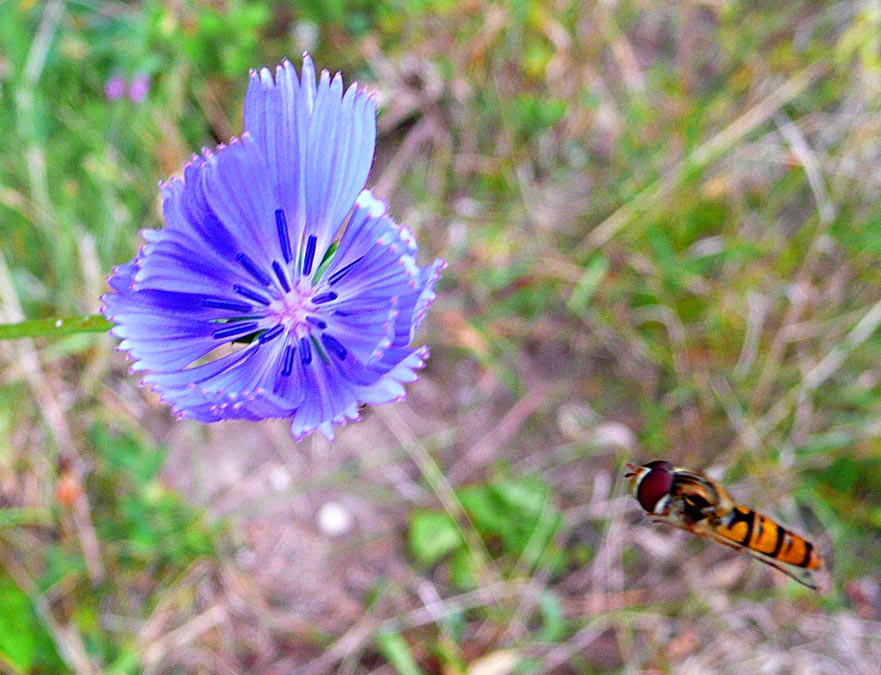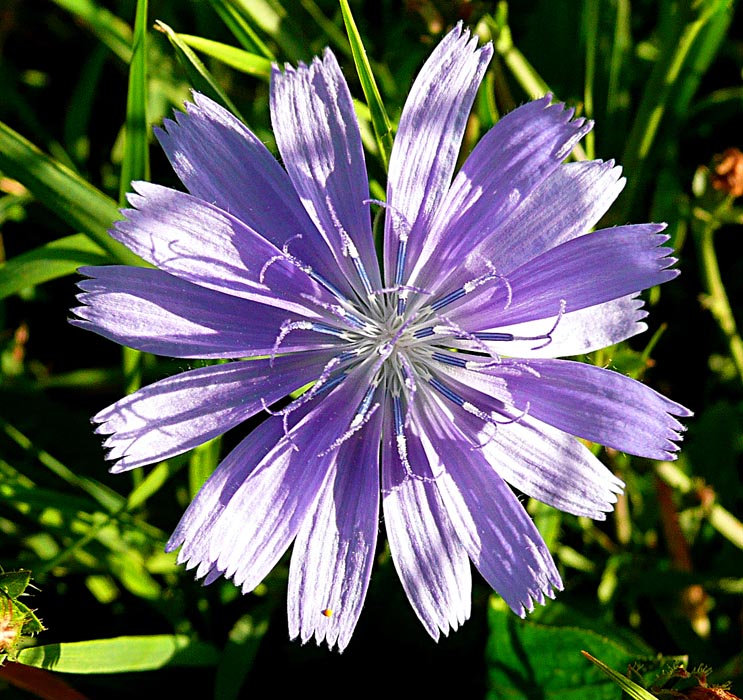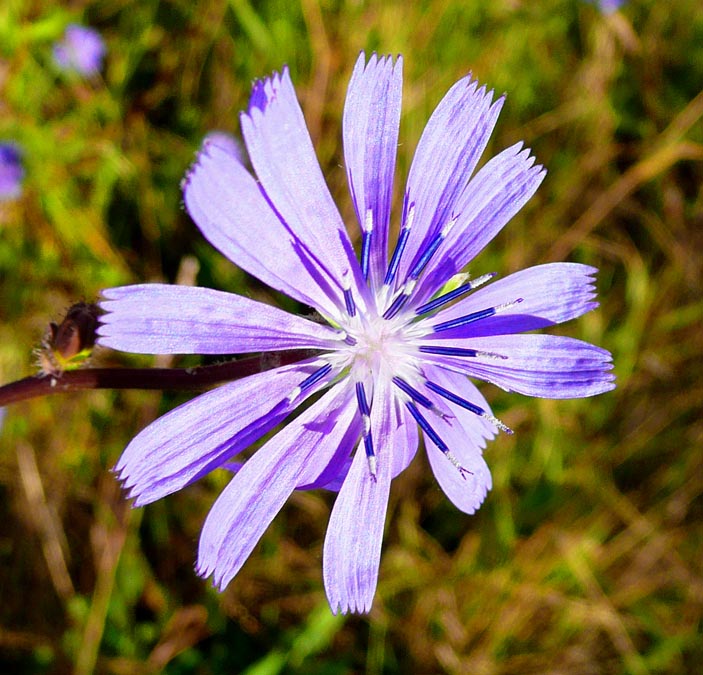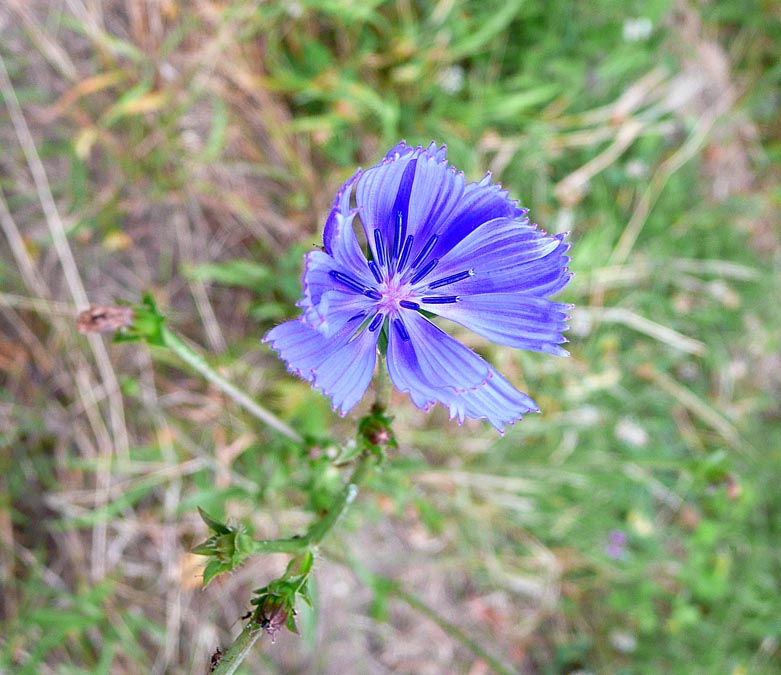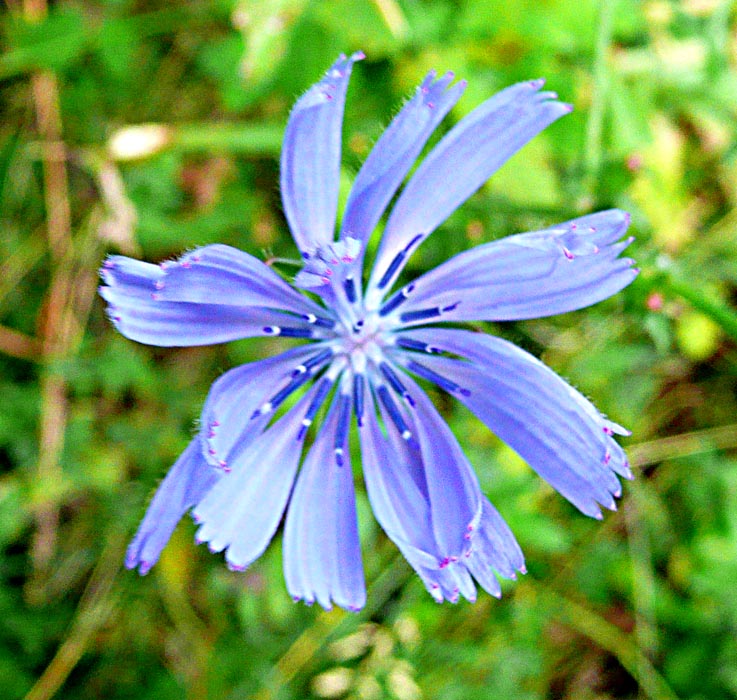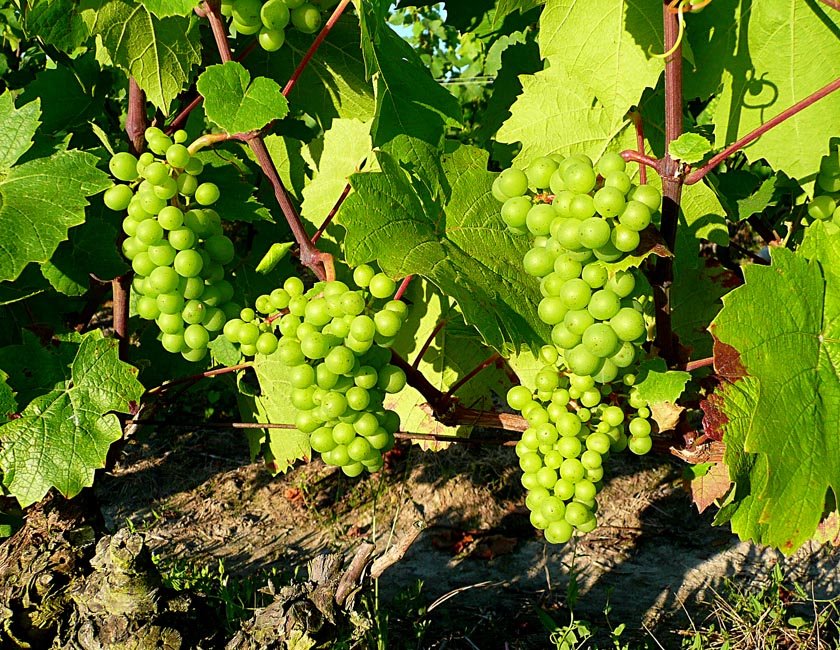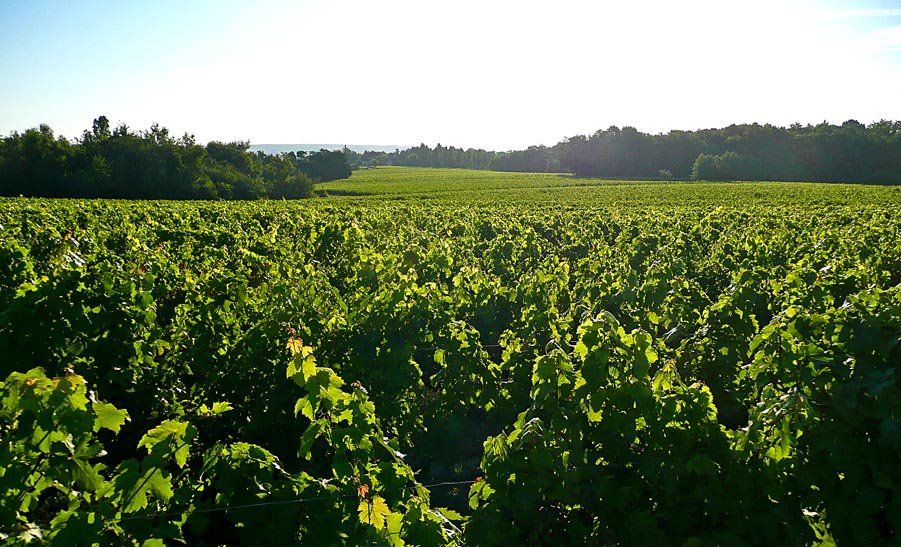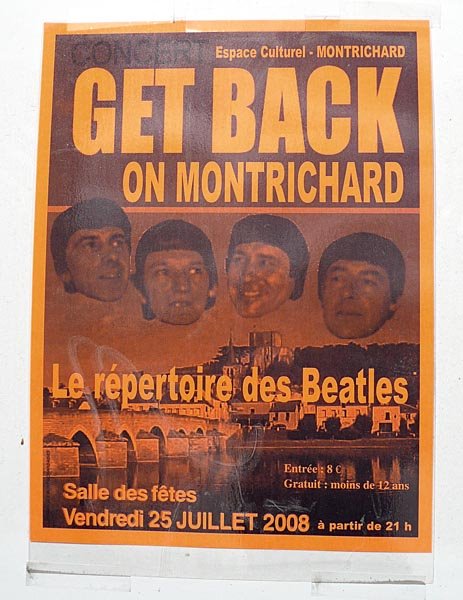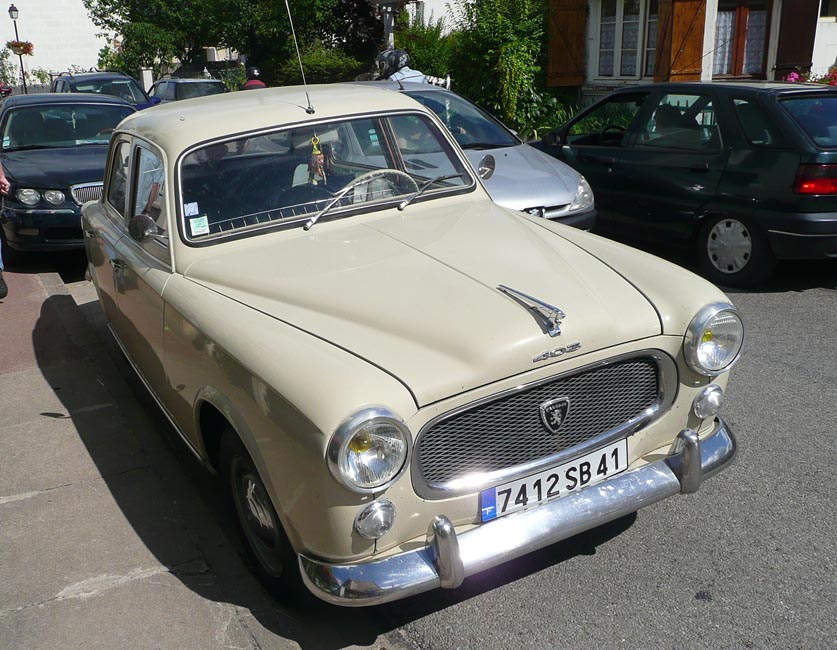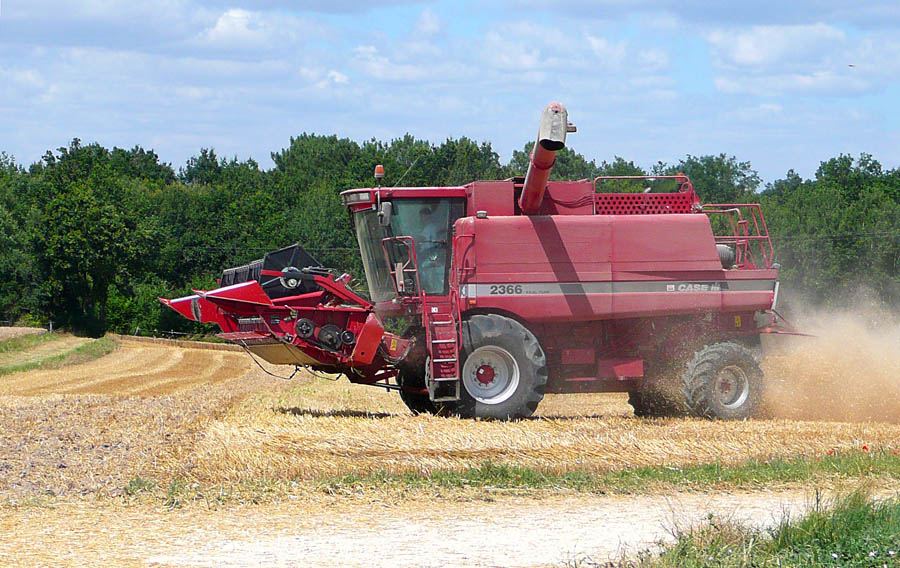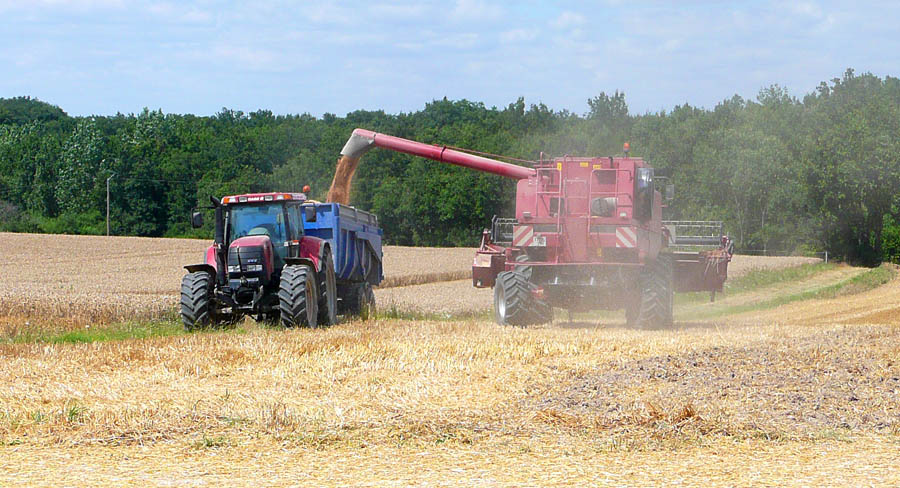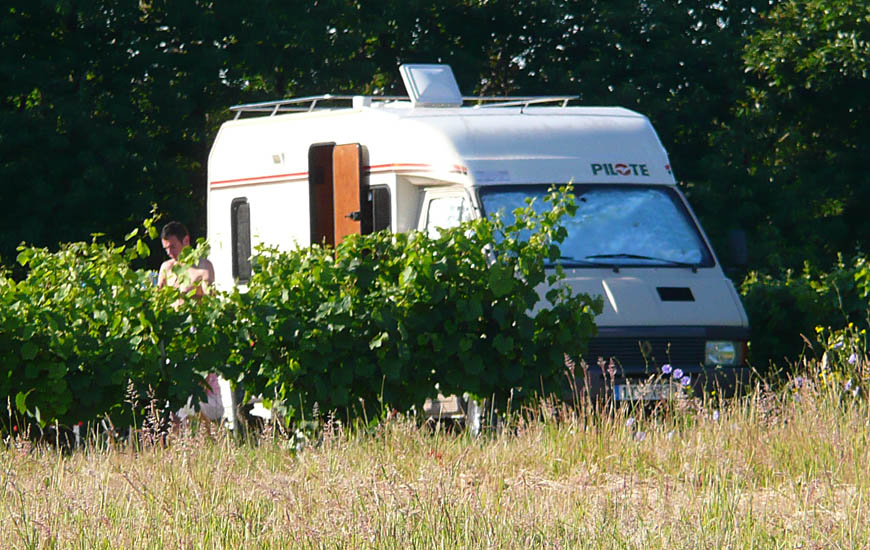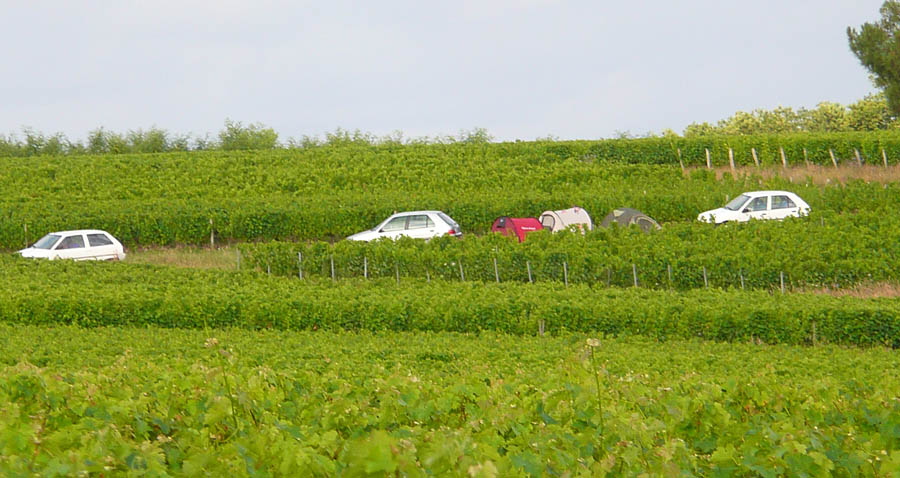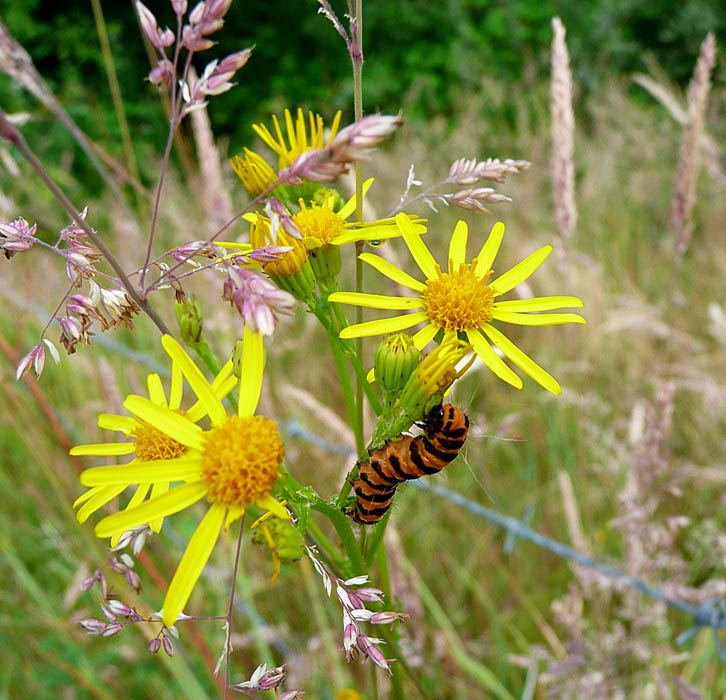We turned around and when we arrived back at the intersection where we had seen the hoopoe... there it was, still scratching around at the base of that hedge. Cheryl saw the bird immediately, and we both got a good look at it for two or three minutes.
Cars passing by so close didn't seem to bother the hoopoe. After a couple of minutes, it flew off to the north and seemed to be taking whatever it had found on the ground to a big tree behind a building maybe 200 meters distant. It didn't stay gone long, though, and it was back in a minute, again scratching around for food or nesting materials.
 A blurry picture of a hoopoe prancing
along the side of the road on the Ile d'Oléron.
A blurry picture of a hoopoe prancing
along the side of the road on the Ile d'Oléron.
I couldn't get a good photo because the sun was low in the sky over my shoulder and the glare on my camera's LCD screen was blinding. I couldn't see what I was trying to photograph. The camera has no viewfinder other than the little screen.
 Can you see it off to the left side?
Can you see it off to the left side?
I couldn't see anything on my camera's screen.
It was also really hard to take a picture of the hoopoe because it was on the other side of the street from us and there were more and more cars going by. I had parked my car in the worst possible place, nearly in the intersection and partially blocking the lane I was in — just halfway off the road. And we didn't want to walk across the street because we figured that would scare the hoopoe away for good.
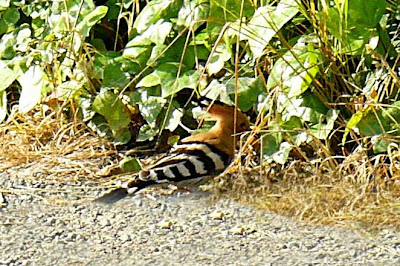 Cheryl got what was probably the best picture
of the morning. We were blocking traffic as
she snapped pictures from inside the car.
Cheryl got what was probably the best picture
of the morning. We were blocking traffic as
she snapped pictures from inside the car.
Then the bird flew away to the south, flying toward some trees over that way. I said I really needed to move the car. Cheryl said she'd walk over in the direction where the hoopoe had flown while I moved the car. There was a bus turnout that would be a good place to park. Then we would wait calmly for a few more minutes to see if we could see the hoopoe again and get a better picture or two of it.
Well, it didn't come back. Cheryl was really excited and at the same time very patient. The hoopoe was all she could think and talk about. We weren't in any hurry after all, so we could wait. And wait. We had had some coffee before we left the
gîte. But there no more sign of the hoopoe. At least Cheryl had actually seen it.
Finally we gave up and got back in the car to continue our drive over to the Intermarché store, in search of a replacement coffee pot. But as we pulled away from the bus turnout, there was the hoopoe again, on the side of the road. Excited again, Cheryl grabbed her camera and started trying to snap some good pictures. I turned on the car's emergency flashers, stopped at the curb, and signaled for the cars behind me go on around. At 9:30 or so, morning traffic had started to build up.
People must have wondered what we were doing and looking at. A pedestrian pushing a bicycle was coming toward us. Cheryl was snapping pictures. The hoopoe was oblivious to all of it. Then the bird saw the pedestrian approaching and took flight. It flew right toward the car windshield and then veered off, passing within a foot or two of the open passenger window. For a moment I thought the hoopoe was going to fly right into the car, but it swooped on past and disappeared into the distance. We were still amazed that we had gotten so close to such a beautiful bird.
 Improvising some coffee-making
Improvising some coffee-making
for lack of a Moulinex carafe at the gîte
We finally arrived at the Intermarché store only to find it closed — not open on Sundays at all. We drove back up the road to a big Champion supermarket, but there we didn't find any replacement coffee pots. We ended up having to return to Intermarché the next day, and there we did find the coffee carafe we needed. For two mornings, however, we had to improvise methods of making coffee.
Meanwhile, that Monday morning, I walked Callie down to the beach and back. On the way back to the
gîte, I passed a shuttered-up beach house with a big back yard, all fenced in. I looked over the fence and there, to my surprise, what did I see? A hoopoe. It flew off when I startled it and that was that.
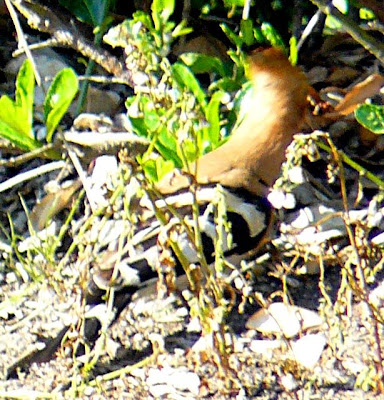 One more attempt to get a good picture
One more attempt to get a good picture
We didn't see any more hoopoes on the Ile d'Oléron. A week later, we drove back to Saint-Aignan. And a few days after that, Cheryl and Walt took the train to Paris to go to the French Open tennis tournament. I drove them to the little train station over on the other side of the Cher River from our house.
 These pictures really aren't worth enlarging, but
These pictures really aren't worth enlarging, but
they were the best we could do under the circumstances.
When they were safely on the train and headed for Paris via Tours, I went back to the car and started home. I needed to stop at the supermarket, so I took a little narrow road from the station toward our local Intermarché. It had been raining, and the road was partially flooded. I was going pretty slow. And then all of a sudden I saw what but a hoopoe on the side of the pavement. It flew up and right toward the car windshield as I approached, before veering off the the right.
I started to think I had become a hoopoe magnet.
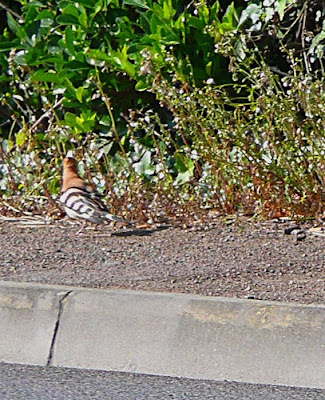 I'll probably never see another hoopoe in my life.
I'll probably never see another hoopoe in my life.
How many of you reading this have ever seen one?
A week or two later, our friend CHM was visiting. He and I went out for a ride around the lanes and through the villages on the north bank of the Cher, across from Saint-Aignan. We saw three or four hoopoes along the edge of the road that June afternoon as we toured around.
And then later in June Walt and I started seeing the small group of hoopoes in the vineyard on our walks with Callie. We both saw them a couple of times at least. I read that hoopoes migrate between sub-Saharan Africa and France at different times of the year, and when I stopped seeing that little flock in the rows of vines last month I assumed they had flown south.
Then just a day or two ago I saw another one. This is definitely the year of the hoopoe for me.
Here are two interesting web sites. First,
hoopoe postage stamps from many nations. And then a site where you can not only see pictures but
hear the hoopoe's call.
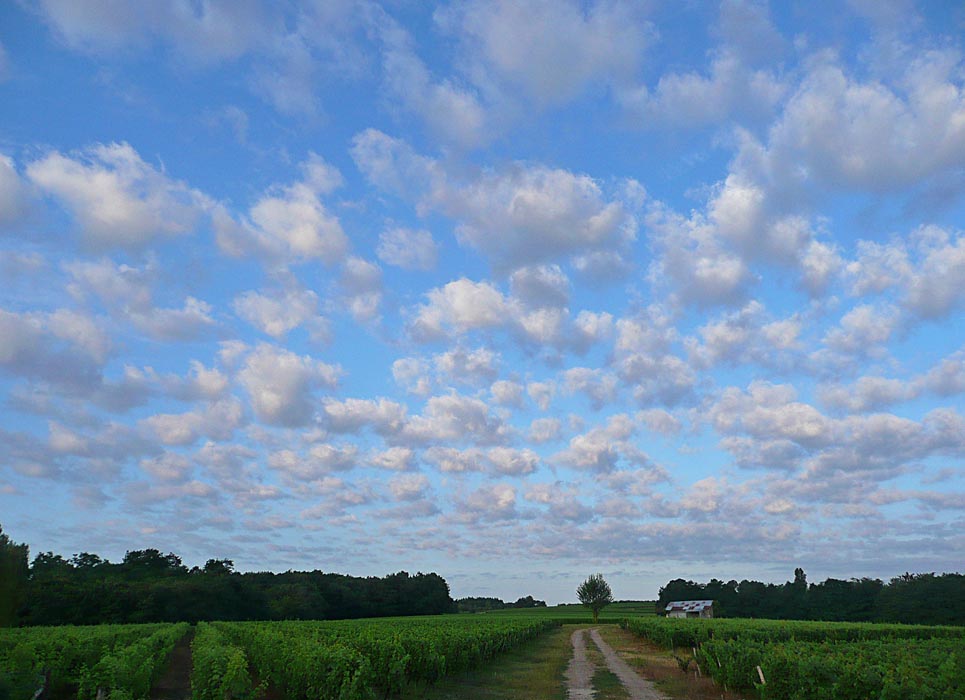
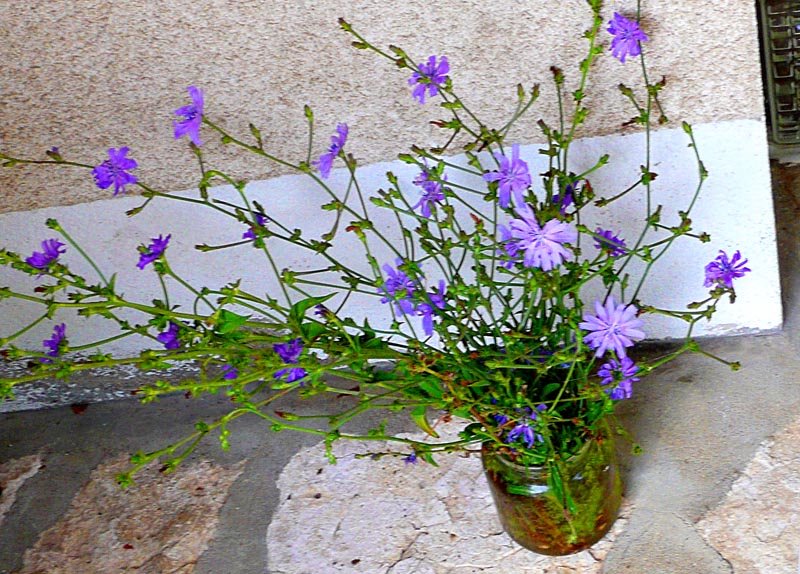 Cornflowers (wild chicory) for seeds
Cornflowers (wild chicory) for seeds Cornflowers (wild chicory) for seeds
Cornflowers (wild chicory) for seeds
